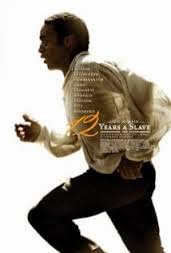Lucy Lastovic
September 11, 2014
Mrs. Lawson- H Block
There
is much debate as to whether watching movies in a class setting can provide
accurate truths or historical insight into the subject. 12 Years a Slave and Glory,
for example, are two movies that provide not only historically accurate
material, but it also immerses its viewers into the real, un-sugarcoated truths
about slavery. While, 12 Years a Slave
portrays the memoir by Solomon Northup, a once free African American citizen
who is sold into slavery, Glory
depicts the story of an all African American regiment lead by Northern Caucasian
soldiers. It is possible to not only gain a historically accurate background,
but to also develop analytical skills that help dissect past events,
circumstances, and emotions just by watching movies.
12 Years a Slave, directed by Steve
McQueen, portrays the real life events of Solomon Northup, a born free African
American citizen who is unfortunately sold into slavery. Instead of going along
the same path as most slavery movies, McQueen displays and recreates the cruelest
of scenes, showing the real truths of
the punishments the slaves endured. Not only does he show the un-sugarcoated
version of what the slaves endured, he also manages to focus in on the “intimate”
relations between owner and slave. This film contains most, if not all
historically accurate accounts based on Northup’s memoir. For example, when Solomon
is dining with whom he believes as two of his employers, they are actually
drugging his drinks, just as Solomon corroborates in his memoir. Glory, directed by Ed Zwick, tells the
story about the 54th Regiment of Massachusetts Volunteer Infantry, an
infantry that was solely filled with nearly African American Soldiers. Colonel
Shaw, a white commanding officer, trains these men in preparation of many
battles to come. What is uncommon knowledge about the Civil War is that nearly
200,000 African American soldiers fought alongside just the North alone. What
is also portrayed in this movie is that even though slavery was indeed
abolished in the North, racism was still extremely present. “There are plenty
of white, Union soldiers who believe Shaw’s men to be incapable of doing anything
more meaningful than menial tasks.” This idea is present throughout the
majority of the film, until the Union commanding officers begin to treat these
soldiers as their equals, not their inferiors. The greatest achievement made by
the 54th infantry is that they proved to not only the Union Army,
but also the Confederate Army, that black soldiers are more than capable to
fight with “the same tenacity and patriotism as white soldiers.”Zwick not only
showed the point of view from Col. Shaw’s side, but he manages to incorporate
the perspectives of the main African American characters. Like 12 Years a Slave, Glory is mostly
historically accurate, due to the fact that it is based off the writings of
Colonel Shaw and the books “Lay This Laurel”
by Lincoln Kirstein, and “One Gallant
Rush” by Peter Buchard.
As McQueen
created 12 Years a Slave, his intentions were to create a movie that immerses people
in the real truths about slavery. In an interview with McQueen, he states that “‘I
was upset with myself that I didn’t know this book and then I realized that no
one I knew knew about it, No one. […] I had an idea and then you see it in your
hand as a book. Amazing.’” As for Zwick, he commented that “’ The story appealed
to me, and I was lucky enough to do it. I don’t think I did it to break a political
barrier. I did it because I felt it needed to be told […]. It was high time.’”
Both of these directors felt like these stories needed to be told, and they did
just that.
As
stated above, it is possible for to gain historical background and also gain
the analytical skills needed to analyze and dissect real events, circumstances,
and emotions by watching movies. Even though this quote is about 12 Years a Slave, it most definitely
applies to Glory as well: “‘12 Years a Slave isn’t about another Scarlett
O’Hara, but about a man who could be one of those anonymous, bent–over black
bodies hoeing fields in the opening credits of Gone With the Wind, a very different story of the old south.’ ” Both
of these movies are more than capable of providing historically accurate
information to its viewers.
Sources,
Film Research- Glory & 12 Years a Slave
12 Years a Slave-
Glory-

